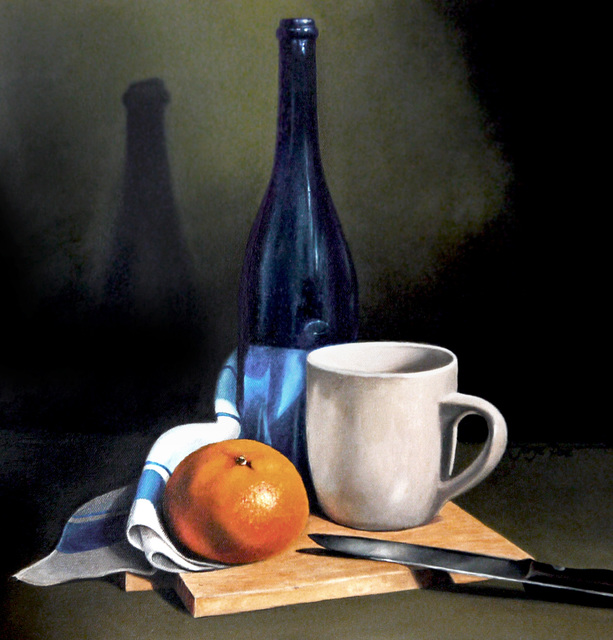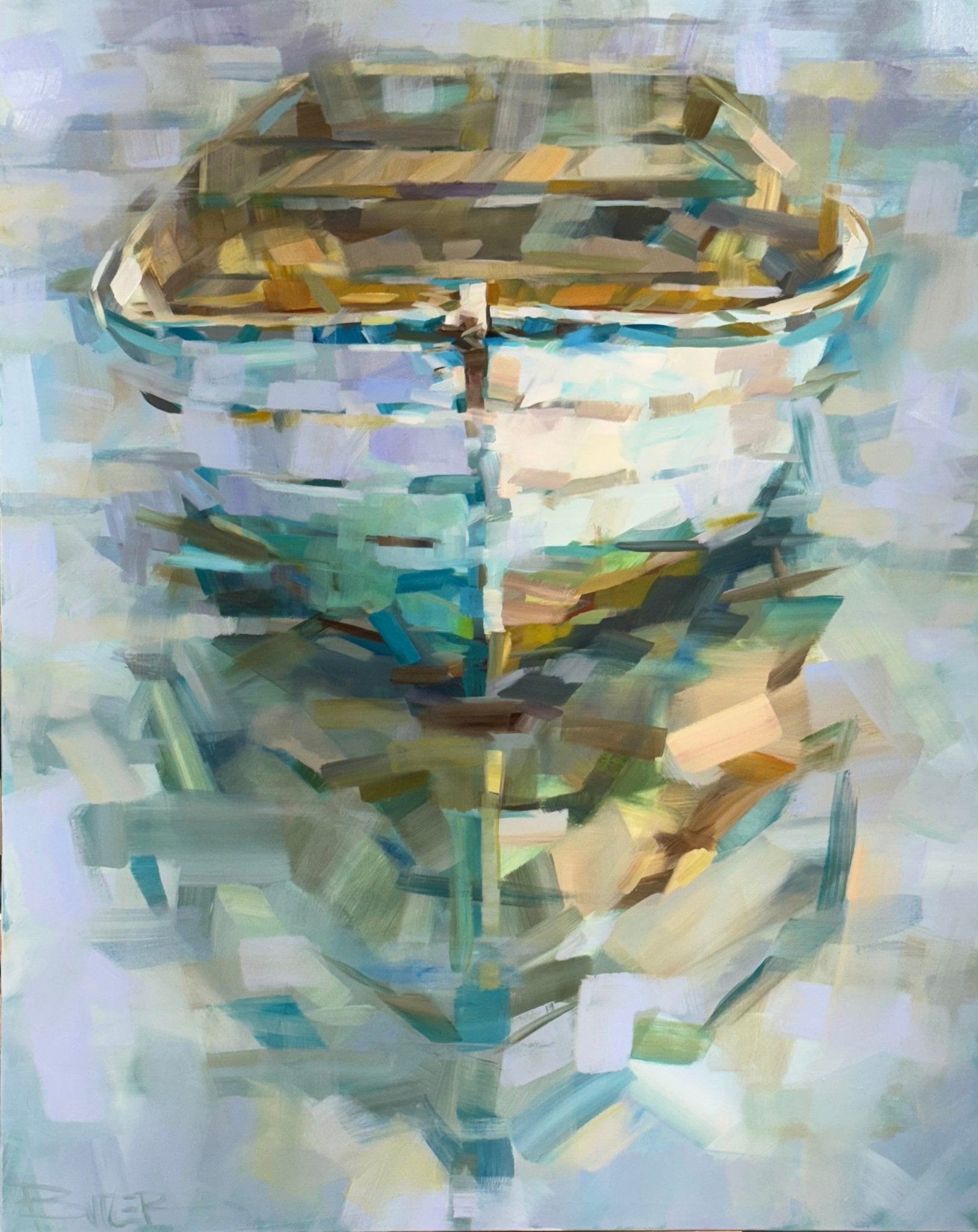Exploring Everything About Oil Paints: An Overview to Recognizing Their Charm and Value
Oil paintings have mesmerized audiences for centuries, offering a look into the imaginative proficiency of different ages. Their abundant background is linked with innovative strategies and extensive emotional expression. Comprehending the products and techniques behind these artworks can enhance admiration. Furthermore, the marketplace for oil paintings provides chances for investors and collectors alike. As one explores this fascinating world, the concern arises: what makes an oil paint absolutely important?
The History of Oil Paint: A Trip Through Time
Oil paint has origins that date back to old times, it truly flourished throughout the Renaissance, when artists discovered its flexibility and rich shade potential. Early instances can be mapped to the 7th century, with techniques advancing notably across societies. The tool became noticeable in Northern Europe in the 15th century, particularly via the works of musicians like Jan van Eyck, that spearheaded its use for detailed realism and lively colors. This period noted a separation from tempera paints, permitting better deepness and structure. As oil paint spread, it affected plenty of artists, causing masterpieces by renowned figures such as Leonardo da Vinci and Rembrandt. The tool's legacy continues, forming the art globe well right into modern times.
Recognizing Oil Repaints: Materials and Techniques
As musicians discover the globe of oil paints, they experience a diverse array of products and methods that specify this medium. The key elements of oil paint consist of pigments, which provide shade, and drying out oils, such as linseed, that bind the pigments and promote application. Different additives can change the paint's texture and drying out time, enhancing versatility. Methods like glazing, where transparent layers are accumulated, and impasto, which involves using thick paint, permit different visual results. In addition, the use of brushes, scheme blades, and even fingers can develop one-of-a-kind textures and finishes. Comprehending these products and strategies makes it possible for artists to fully express their creativity and attain the wanted effect in their artwork.
The Function of Shade in Oil Paints
Shade plays an essential function in oil paints, influencing both aesthetic allure and emotional vibration. Understanding color theory essentials, including the relationships between colors, can improve a musician's ability to convey state of mind and atmosphere. Additionally, understanding color blending strategies enables higher deepness and richness in a painting's palette.

Shade Concept Fundamentals
Comprehending shade concept is necessary for musicians dealing with oil paints, as it forms the structure for producing harmonious and aesthetically appealing compositions. Color concept includes the study of how colors engage, the shade wheel, and the partnerships between main, secondary, and tertiary colors. Artists utilize complementary shades to improve contrasts and develop centerpieces, while similar colors promote unity and cohesiveness within an item. Furthermore, the principles of warm and great colors influence the understanding of deepness and room in a paint. Comprehending these concepts enables artists to control color effectively, directing the viewer's eye and interacting their intended message. Proficiency of color concept ultimately enriches a musician's capability to share emotions and concepts via their work.
Emotional Influence of Shade
The psychological influence of shade in oil paints plays a vital duty in how visitors connect and perceive with artwork. Shades evoke specific feelings and state of minds, affecting the viewer's mood. Cozy hues like reds and oranges can produce a feeling of heat and power, while trendy tones such as blues and greens commonly evoke peace or introspection. Artists tactically choose color combinations to boost narrative aspects, assisting the target market's psychological journey. The saturation and comparison of shades even more enhance these impacts, drawing focus and producing emphasis. Ultimately, the interaction of shades in oil paints not just boosts their aesthetic allure yet additionally offers as a powerful medium for psychological expression, improving the viewer's experience and interpretation.
Color Mixing Techniques
While many aspects of oil painting add to the overall structure, grasping color blending strategies is crucial for achieving preferred effects and depth. Shade mixing can be come close to through various methods, consisting of the additive and subtractive procedures. Additive mixing entails integrating colors of light, while subtractive blending depends on pigments, where colors blend to produce new shades. Artists commonly utilize a limited palette to create unified works, comprehending the partnerships in between key, secondary, and tertiary shades. Methods such as glazing and scumbling better enhance deepness and luminance. By masterfully blending shades, a musician can stimulate emotions, develop centerpieces, and accomplish a sense of realistic look, eventually boosting the painting's emotional and aesthetic influence.
Famous Oil Painters and Their Iconic Works

Famous for their mastery of color and strategy, oil painters have created several of one of the most renowned art work in history. Renowned musicians like Vincent van Gogh captivated target markets with his stirring brushwork in "Starry Evening," while Claude Monet's "Perception, Sunup" laid the foundation for Impressionism. Leonardo da Vinci's "Mona Lisa" continues to be a long-lasting symbol of creative brilliant, showcasing his ability in capturing human expression. At the same time, Rembrandt's "The Night Watch" highlights his ingenious use of light and darkness. Other significant figures include Pablo Picasso, that reinvented modern-day art with his vibrant trial and error in works like "Les Demoiselles d'Avignon," and Georgia O'Keeffe, whose vibrant representations check here of flowers and landscapes aided define American innovation. Each musician's special design added substantially to the oil paint landscape.
Exactly how to Examine the Quality of an Oil Paint
Reviewing the high quality of an oil painting entails a cautious evaluation of workmanship techniques, along with an evaluation of shade and make-up. Observing brushwork, layering, and the application of paint can reveal the artist's ability level. Furthermore, the interaction of colors and the total plan of components add significantly to the paint's aesthetic value.
Examining Workmanship Techniques
A precise evaluation of workmanship strategies is important for establishing the top quality of an oil painting. Evaluators need to first check out the application of paint; thick, textured brushstrokes might recommend a competent hand, while extremely consistent applications can indicate a lack of deepness. oil paintings for sale. The layering technique is additionally crucial; the presence of glazes and differed density can improve luminance and intricacy. In addition, the high quality of the materials made use of, such as the canvas and pigments, plays a substantial duty in longevity and total visual. Focus to information in elements like edges and changes between shades reflects the artist's commitment to their craft. Ultimately, these strategies contribute to the painting's emotional influence and market price, working as indications of the musician's ability and intent
Evaluating Shade and Composition
While evaluating the top quality of an oil painting, one must focus on the interplay of color and composition, as these aspects are fundamental to the artwork's total impact. Shade choices can evoke emotions and develop state of mind; therefore, the artist's combination ought to be taken a look at for consistency and comparison. A well-balanced structure routes the audience's eye and develops a feeling of unity. Artists frequently utilize strategies like the guideline of thirds or leading lines to boost aesthetic passion. Additionally, making use of light and darkness can add depth, improving the three-dimensionality of the paint. Eventually, an effective oil painting marries shade and make-up, engaging the audience and inviting a deeper recognition of the musician's vision and technique.
Caring for and Preserving Oil Paintings
Correct treatment and preservation of oil paints is necessary for preserving their honesty and long life. To shield these artworks, it is important to present them far from direct sunshine, which can create fading and staining. Keeping a secure setting with controlled temperature and moisture more aids in preventing damages. Cleaning must be done delicately utilizing a soft, dry cloth, avoiding any type of rough chemicals that could hurt the paint or varnish. Normal evaluations for signs of deterioration, such as breaking or flaking, are recommended. When transporting or saving oil paints, correct cushioning and framework are necessary to avoid physical harm. Inevitably, thorough care adds to the visual charm and worth of oil paintings in time.
The Market for Oil Paintings: Accumulating and Investing
Comprehending the marketplace dynamics for oil paintings is crucial for collectors and capitalists alike. The value of these art work is influenced by different variables, consisting of the musician's reputation, historical value, and existing fads. Collection agencies usually look for items that reverberate personally while thinking about prospective recognition in value. Galleries and public auctions work as main venues for trading, with prices rising and fall based upon need and rarity. Purchasing oil paints needs research study right into the marketplace, in addition to an understanding of authenticity and provenance. Furthermore, emerging musicians may supply chances for considerable returns, while developed names can command high rates. In general, a critical approach to accumulating can produce both aesthetic enjoyment and financial benefits.

Often Asked Inquiries
What Are the Ecological Impacts of Oil Painting Products?
The environmental effects of oil paint materials include the release of unpredictable natural substances (VOCs), dangerous waste generation, and resource extraction for pigments. These aspects add to air pollution and eco-friendly degradation, raising problems among ecologically mindful artists and consumers.
How Do Different Canvases Influence Oil Paint Results?
Different canvases influence oil paint results considerably. Absorbency, surface area, and structure quality can change paint application, drying times, and shade vibrancy. Artists frequently pick details canvases to accomplish wanted impacts and boost their imaginative expression.
Can Oil Paintings Be Restored if Harmed?
Oil paintings can without a doubt be brought back if harmed. Expert conservators make use of different techniques to fix rips, clean surfaces, and address discoloration, making certain that the art work retains its original charm and worth for future generations.
What Are the Signs of an Original Oil Painting?
The signs of an initial oil paint consist of visible brush strokes, structure variations, and an uneven canvas weave (oil paintings for sale). Furthermore, credibility may be confirmed via provenance, signatures, and the visibility of a varnish layer one-of-a-kind to oil tools
Exactly How Has Technology Influenced Modern Oil Painting Techniques?
Technology has actually substantially affected modern oil painting strategies by introducing electronic devices for preparation, boosted products for structure and longevity, and online systems for sharing and offering art, consequently broadening artists' innovative possibilities and audience reach. Oil painting has roots that date back to ancient times, it absolutely thrived during the Renaissance, when musicians discovered its flexibility and rich color potential. The emotional impact of color in oil paints plays a vital role in just how audiences perceive and connect with art work. While several elements of oil paint contribute to the total composition, grasping color mixing techniques is crucial for achieving wanted effects and depth. Evaluating the quality of an oil paint entails a careful analysis of workmanship techniques, as well as an evaluation of shade and make-up. While reviewing the top quality of an oil painting, one need to concentrate on the interplay of shade and structure, as these elements are basic to the art work's total effect.